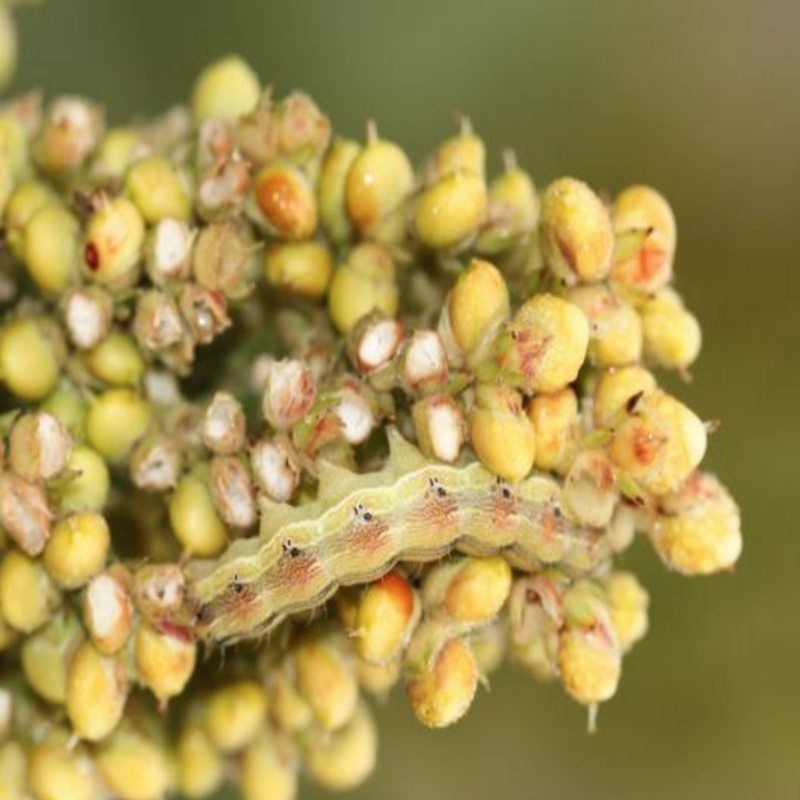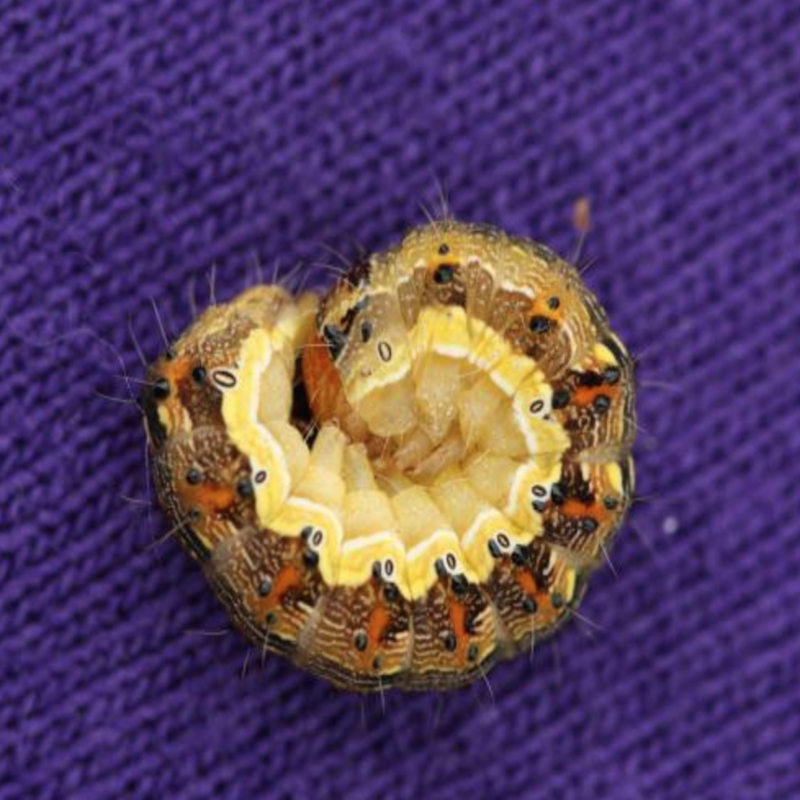
Armyworm caterpillar on sorghum

Young armyworm larvae are pale green which turn dark green in later stages. Full grown larvae are 1-2 inches and have orange-red head capsules. The head capsules have honeycomb-like markings, and the body lacks obvious hairs. Overall body coloration varies, but is usually some shade of greenish-black with two alternating dark and orange stripes running lengthwise down each side plus a light or faint white line on the back.
Armyworms tend to feed at night and hide in vegetation and in the soil by day, which makes them hard to detect. In spring, larvae feed on plants causing defoliaiton and stem clipping above the soil line. In ideal conditions, a second generation of larvae may appear, damaging wheat heads and clipping stems just below the head. Problems develop when the larvae consume the grasses or the grasses dry (wheat matures) and the larvae move to corn to survive.
